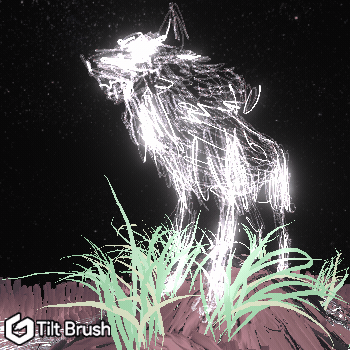Virtual Reality is an amazing new medium for creativity, and naturally, as a new technology, questions will pop up about the details and practicalities of using this exciting new tool.
How does Virtual Reality work?
Virtual Reality allows us to be transported to another completely virtual immersive time or place.
By using a motion tracked head-mounted display (HMD) such as the Oculus Rift or HTC Vive, which in conjunction with light sensors and handheld controllers you are able to interact, manipulate, feel and move around in a 3D space (approx 5m x 5m x 5m cube) and interact with the digital world, just as though it is a real tangible place.
Why is Virtual Reality different from other new technology, isn’t it just a gimmick?
Virtual Reality is an immersive technology, and you really need to experience it to understand its power and relevance. Whilst some advancements become expensive gimmicks for entertainment, Virtual Reality is the next step in allowing humans to interact with technology. This innovation provides believable, almost magical experiences, by placing you at the centre of the world with the power to change and create infinite worlds; this experience is unlike any other current form of media.
As the technology advances, the existing limitations with the medium will only decrease and we are likely to see it emerge in many classrooms, cinemas and living rooms, much like how we interact with smartphones every day.
How can Virtual Reality Painting or Previsualisation help with speed and cost of presenting my ideas?
Depending on the requirements, Virtual Reality creative tools can help create 3D representations of your ideas in a fraction of the time and cost that it would take to create in other 3D applications.
Designing sketches or previsualisations in Virtual Reality allows you to view rapid prototypes with the depth and scale of a real object. If you are designing a ship, your audience can view the model as a miniature or scale it up and stand on the bow and investigate it at human scale, complete with a sense of vertigo when looking off the edge.
Virtual Reality creative tools can allow for immediate changes on the fly without complex rendering, add animation to an otherwise static image and provide one consolidated three-dimensional plan which can be viewed and filmed from an infinite amount of camera angles.
Clearer communication with your team, sketches with depth; closer to the real thing, immediate changes and opportunities to solve problems and catch mistakes in the planning phase, and not in production.
What is your experience with Virtual Reality?
 For the last 12 years we have worked closely with brands, broadcasters and agencies to create video and digital advertising campaigns in two continents. For the last two years we have started developing projects in Virtual Reality receiving commissioned projects creating 3D artwork in virtual environments, virtual training material for corporate workforces and working with international artists to create immersive installations.
For the last 12 years we have worked closely with brands, broadcasters and agencies to create video and digital advertising campaigns in two continents. For the last two years we have started developing projects in Virtual Reality receiving commissioned projects creating 3D artwork in virtual environments, virtual training material for corporate workforces and working with international artists to create immersive installations.
Virtual Reality sits at a perfect junction of three fields of our expertise; creative experience, working in the commercial world and a specialist knowledge of technology. We like to think we’re able to wear many hats to find you the best balance between technology and helping solve commercial challenges.
How much does a Virtual Reality Artist cost to hire?
Every project is different so we cost up every quote differently. Whilst we have a set cost for equipment and labour, sometimes the creative concept is the largest part of the costing process.
We can work to most budgets and tailor a cost for your project. Simply email Sean at sean@seanrodrigo.com and we can come up with an immersive, creative idea with a cost-effective quote.
Where are you based?
We are based in London, with many technology partners around the UK. If required, we can easily service clients internationally.
How does Virtual Reality fit into the traditional sets of tools and services?
Virtual Reality can serve as many different applications, but most importantly it complements other forms of media. The creative tools accessible to an artist are complemented by a knowledge of traditional art, storyboards, presentation media, 3D animation, graphic design, architecture and many others.
The technology simply expands the creative possibilities of the user, providing a platform for more immersive storytelling. Virtual Reality is not a substitute for other tools and services, it sits comfortably between other mediums offering advantages not possible with traditional disciplines (advantages mentioned the above question).
Will wearing a screen on my head hurt my eyes?
When used properly and in moderation, Virtual Reality should not cause you any discomfort.
That being said, sessions in Virtual Reality last only 30 minutes to an hour per user which is unlikely to cause issues. The headsets we own are built for comfort and the face pads sit around your eyes and are cleaned between uses.
If you are over 13 years old and don’t have any issues with epilepsy or balance you should be okay. If you have any specific health requirements or concerns simply let us know beforehand.
Can you wear glasses whilst using Virtual Reality?
Of course! Most glasses will fit inside the headset, although as a matter of convenience some people opt to wear contact lenses when they use Virtual Reality.
Can I import 3D models and reference images to use in Virtual Reality?
Yes, most painting or modelling applications allow importing .OBJ or .FBX files.
This means we can always work with models of existing products or create custom artwork using models as a reference. Currently, there is a limit to how complex the model can be, but as a guide lower polygon assets load better than complex ones.
It is also possible to convert other formats into files which can be viewed within Virtual Reality.
Where do I have to go to experience Virtual Reality?
Sean owns a portable Virtual Reality machine which can travel as carry-on luggage around the world or just to Shordich. If you ask Sean nicely and he might visit your office/studio with a demo just email sean@seanrodrigo.com
If you’re based in London or Brighton, a great way to experience Virtual Reality for the first time in fun and casual setting, is to visit a pub-based arcade at http://lcnvirtuallabs.com/, tell them Sean sent you.
How can I use the artwork created in Virtual Reality?

Within many of the applications used to create artwork, there are options to export a range of final assets.
We are able to export .jpeg images, animated .gif’s, videos, 3D models and textures directly from the programs. On request, we are also able to export mixed reality content (overlaying footage of Sean painting onto footage of the artwork being created), offer multiscreen video (a video showing many cameras and angles in one frame) or you could even be live-streamed to Facebook, YouTube or Skype.
Can I 3D print models made in Virtual Reality?
Yes, depending on the model created, we are able to create a 3D asset which can be sent to a 3D printer.
This means your digital ideas and scans can be printed into a physical object.
